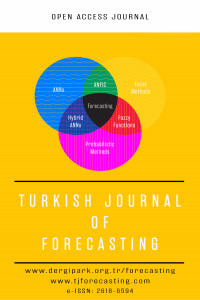A Fuzzy Modelling Approach to Robust Design via Loss Functions
A Fuzzy Modelling Approach to Robust Design via Loss Functions
fuzzy modeling, response surface methodology robust parameter design, upside-down normal loss function,
___
- G.E.P. Box and K.B. Wilson, On the Experimental Attainment of Optimum Conditions, J. Roy. Statist. Soc. Ser. B Metho. 13 (1951) 1-45.
- G.G. Vining and R.H. Myers, Combining Taguchi and Response Surface Philosophies: A Dual Response Approach, J. Qual. Technol. 22 (1990) 38-45.
- E. Del Castillo and D.C. Montgomery, A Nonlinear Programming Solution to the Dual Response Problem, J. Qual. Technol. 25 (1993) 199-204.
- D.K.J. Lin and W. Tu, Dual Response Surface Optimization, J. Qual. Technol. 27 (1995) 34-39.
- K. Kim and D.K.J. Lin, Dual Response Surface Optimization: A Fuzzy Modeling Approach, J. Qual. Technol. 30 (1998) 1-10.
- A.C. Shoemaker, K.L, Tsui, and C.F.J. Wu, Economical Experimentation Methods for Robust Parameter Design, Technometrics. 33 (1991) 415-427.
- K.A. Copeland and P.R. Nelson, Dual Response Optimization via Direct Function Minimization, J. Qual. Technol. 28 (1996) 331-336.
- J.M. Lucas, How to Achieve a Robust Process Using Response Surface Methodology, J. Qual. Technol. 26 (1994). 248-260.
- O. Köksoy and N. Doganaksoy, Joint Optimization of Mean and Standard Deviation in Response Surface Experimentation, J. Qual. Technol. 35 (2003) 239-252.
- O. Köksoy, Multiresponse Robust Design: Mean Square Error (MSE criterion), Appl. Math. Comput. 175 (2006) 1716-1729.
- D.C. Drain and A.M. Gough, Applications of the Upside-down Normal Loss Function, IEEE T. Semıconduct M. 9 (1996) 143–145.
- O. Köksoy and S.S. Fan, An Upside-down Normal Loss Function-based Method for Quality Improvement, Eng. Optimiz. 44 (2012) 935-945.
- M. Zeybek and O. Köksoy, Optimization of Correlated Multi-response Quality Engineering by the Upside-down Normal Loss Function, Eng. Optimiz. 48 (2016) 1419-1431.
- H.J. Zimmermann, Fuzzy Sets, Decision Making, and Expert Systems, Kluwer Academic Publishers, Boston, M.A. (1987).
- C.W. Kirkwood, Strategic Decision Making, Duxbury Press, Belmont, C.A. (1996).
- H. Moskowitz and K. Kim, On Assessing the H Value in Fuzzy Linear Regression, Fuzzy Sets Syst. 58 (1993) 303-327.
- G.E.P. Box and N.R. Draper, Empirical Model Building and Response Surfaces, John&Sons, New York, N.Y. (1987).
- Yayın Aralığı: Yılda 2 Sayı
- Başlangıç: 2017
- Yayıncı: Giresun Üniversitesi
A New Journal for Forecasting Research
Erol EGRİOGLU, Ufuk YOLCU, Eren BAS, Ali Zafer Dalar, Ozge Cagcag Yolcu
Bayesian Learning based Gaussian Approximation for Artificial Neural Networks
BIST 100 Index Estimation Using Bayesian Regression Modelling
Cihat ÖZTÜRK, Deniz EFENDİOĞLU, Nurullah GÜLEÇ
Zeynep BEKTAŞ, Tarık KÜÇÜKDENİZ, Tuncay ÖZCAN
A Fuzzy Modelling Approach to Robust Design via Loss Functions
